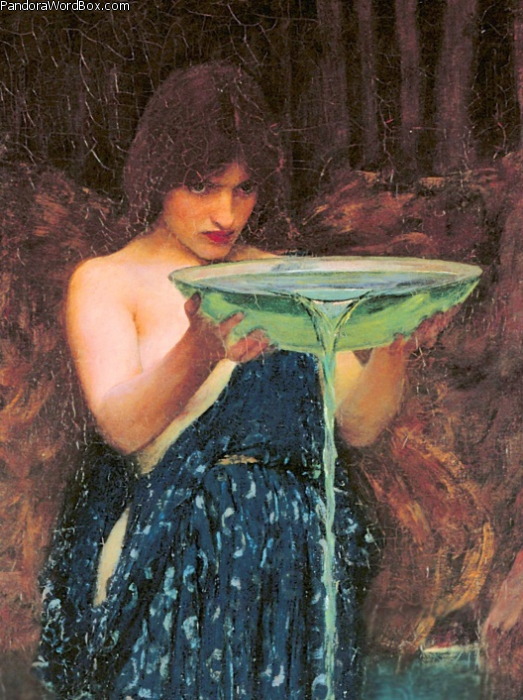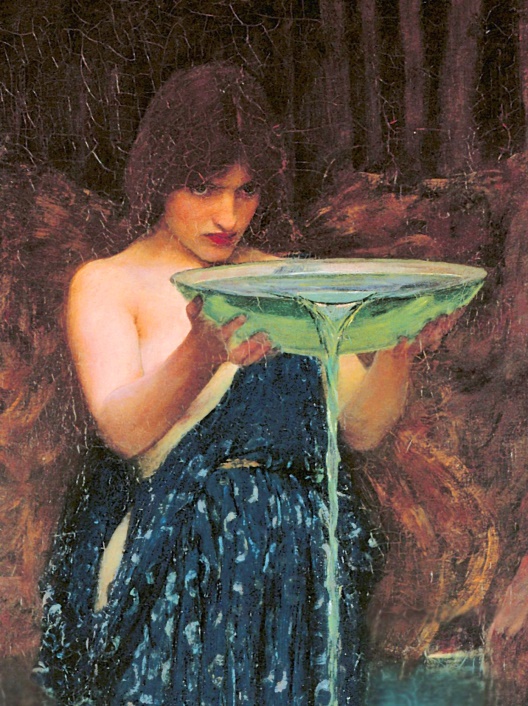|
× UKRAINIAN CHILDREN WITH DISABILITIES HAVE SPECIAL NEEDS |
CIRCE CHAI CHARM PHARMACY PHARMACOLOGY POISON ANTIDOTE

(details from "Circe Invidiosa") (see related A | B | C | D), 1892 John William Waterhouse (1849–1917) Art Gallery of South Australia, Adelaide, Australia
Since Ovid presented the poetic story of mythic Circe, she stands across centuries as an alluring witch. Here she is shown as “charivna holding a “chara” with a magic “chai” (in Ukrainian, fairy or witch, cup, and potion or tea). The expression of her face speaks of and evil intent. Faces that speak can be called facies. Standing on water, she is spilling her magic brew that transformed the maiden Scyla, loved by Glaucus. It was her revenge for being spurn by Glaucus. Circe's love for Glaucus metamorphosed into hate against Scyla.
Circe is an emblem of pharmacology, the roots of which are in the knowledge of alkaloid-containing plant drugs. The story of Odysseus was confronted by Circe who seduced him to share her bed and drink her "chai". To her surprise, Odysseus was not changing to a pig, which Circe intended and achieved with ordinary men. Odysseus was given an antidote by Hermes, the magic herb we describe elsewhere. Odysseus and Circe became in love and had children.
This story and the emergence of pharmacy and pharmacology along with the critical history of Rudolph Buchheim from Dorpat (now University of Tartu in Estonia) is further illustrated elsewhere.
20190926 ww
|









